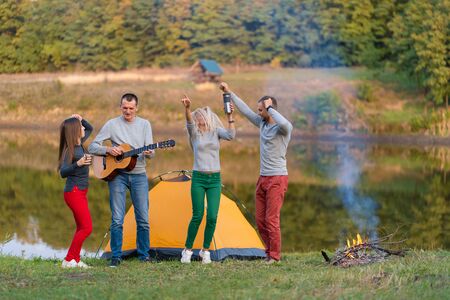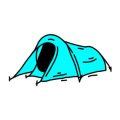Understanding Fire Safety and Local Regulations
If you’re planning to create the perfect campfire for warmth, cooking, or light, it’s important to start with fire safety and knowing the local rules. A good fire can make your camping trip cozy and fun, but being responsible is key to protecting yourself, others, and nature.
Why Fire Safety Matters
Campfires can get out of control quickly if not handled carefully. Following safety practices helps prevent wildfires and accidents at the campsite. Plus, understanding the rules will keep you from getting fined or asked to put your fire out by rangers.
Essential Fire Safety Practices
| Practice | Why It’s Important |
|---|---|
| Clear the Area | Removes flammable materials that could catch fire easily |
| Keep Water Nearby | Lets you put out flames fast if needed |
| Never Leave Unattended | Prevents small fires from becoming big problems |
| Build in a Fire Ring or Pit | Keeps the fire contained and safer for everyone |
| Fully Extinguish When Done | Makes sure nothing reignites after you leave or go to bed |
Know the Local Rules and Bans
Before lighting any fire, check for local regulations. Many campsites and parks have specific rules about where and when you can have a fire. In dry seasons, there may be complete fire bans due to wildfire risk.
| What to Check For | Where to Find Info |
|---|---|
| Campsite Fire Policies | Campsite office, park ranger, website signs at entrance |
| Current Fire Bans or Restrictions | State forestry websites, local news, park rangers’ updates |
| Allowed Firewood Sources | Campsite office (some places restrict outside wood due to pests) |
| Designated Fire Areas Only? | Campsite map or posted rules at site entrance |
Pro Tip:
If you’re unsure about any rule or current conditions, always ask a park ranger or check official websites before starting your campfire. Being prepared keeps everyone safe and lets you enjoy your time around the campfire worry-free!
2. Choosing the Right Fire Site and Preparation
Before you strike a match, picking the perfect spot for your campfire is essential for safety and comfort. Whether youre aiming to keep warm, cook a meal, or light up your site, the right location makes all the difference.
How to Select a Safe and Effective Fire Spot
Look for a flat, clear area away from tents, trees, and anything that might catch fire easily. A good rule of thumb in the U.S. is to set up your fire at least 15 feet (about 5 meters) from tents and other gear. If it’s windy, choose a spot sheltered by rocks or logs to help control sparks and smoke direction.
| Consideration | Why It Matters |
|---|---|
| Distance from Tents | Keeps you safe from stray embers and heat |
| Wind Direction | Prevents smoke from blowing into camp and reduces fire risk |
| Availability of Wood & Materials | Saves time and energy gathering fuel nearby |
| Clear Ground Area | Avoids accidental spread of fire |
Preparing Your Fire Ring or Pit
If there’s an established fire ring at your campsite (common at many U.S. campgrounds), use it to minimize your impact on the environment. If not, make your own by clearing a circle about three feet wide down to bare soil and surrounding it with rocks. This helps contain the fire and keeps it manageable.
Gather All Your Supplies First
Before lighting your fire, collect everything you’ll need:
- Tinder: Dry leaves, grass, or commercial fire starters
- Kindling: Small sticks or twigs (about pencil-thick)
- Firewood: Larger pieces of dry wood (wrist-thick or bigger)
- Water Bucket or Shovel: For safety, always have a way to put out your fire quickly if needed
Pro Tip: Gather More Than You Think You Need!
The last thing you want is to run out of fuel just as you’re getting warm or cooking dinner. It’s better to over-prepare when gathering wood and supplies.

3. Gathering and Organizing Your Materials
Before you can create the perfect campfire for warmth, cooking, or light, you’ll need to gather the right materials and stack them correctly. The key ingredients for a successful fire are tinder, kindling, and firewood. Knowing what to look for and how to organize your materials is essential for an efficient and safe fire.
Identifying and Collecting Tinder, Kindling, and Firewood
| Material | Description | Examples (US Local Woods) |
|---|---|---|
| Tinder | Very small, dry material that catches fire easily | Pine needles, dry leaves, birch bark, dryer lint |
| Kindling | Small sticks or twigs that catch from tinder and help ignite larger wood | Small branches from oak, maple, hickory trees; pine cones |
| Firewood | Larger pieces of wood that keep your fire burning longer | Split logs of hardwoods like oak, maple, hickory; locally sourced seasoned wood |
Tips for Finding the Best Local Wood in the US
- Hardwoods: Oak, hickory, maple, and ash burn hotter and longer—perfect for warmth or cooking.
- Softwoods: Pine or fir ignite quickly but burn fast—great for kindling but not ideal as main firewood.
- Avoid collecting wood from protected areas or using live branches. Always follow local regulations about gathering firewood.
- If you’re buying firewood near your campsite, ask locals which species work best in the area’s climate.
How to Properly Stack Your Fire Materials
The way you arrange your tinder, kindling, and firewood matters for airflow and ignition. Here are two popular stacking methods used by American campers:
| Method | Description & Use | Best For |
|---|---|---|
| Teepee Stack | Tinder at the center with kindling arranged around it in a cone shape. Place larger firewood leaning against the kindling. | Quick starts and even heat—ideal for cooking or a quick warm-up. |
| Log Cabin Stack | Create a square base with two logs side by side. Stack more logs in alternating layers like building blocks with tinder and kindling in the center. | Longer-lasting fires and steady heat—great for warmth at night. |
Pro Tips:
- Keep your materials dry by storing them under a tarp or in a sheltered spot until you’re ready to use them.
- If conditions are damp, carry some extra dry tinder from home just in case.
- Avoid over-packing your stack—good airflow is crucial for a clean-burning fire.
4. Building the Ideal Fire for Your Purpose
When you’re camping in the U.S., building the right kind of fire can make all the difference—whether you’re trying to stay warm on a chilly night, cook a tasty meal, or light up your campsite for some evening fun. There are several classic fire structures that campers use, each with its own strengths. Let’s break down the most popular styles and help you decide which is best for your needs.
Teepee Fire
The teepee fire is one of the most common and easiest fires to build. Simply stack small sticks and kindling in a cone shape, like a Native American teepee tent. Light the tinder in the middle, and as it burns, the flames climb up and ignite the larger sticks.
Best For:
- Quick warmth
- Getting a fire started fast
- Producing lots of light
Log Cabin Fire
This structure looks just like a miniature log cabin. Stack larger logs in a square shape around your tinder and kindling, layering more logs on top as you go. The open center allows air to flow and keeps your fire burning steadily.
Best For:
- Cooking meals (especially over coals)
- Long-lasting heat
- A stable, easy-to-maintain fire
Dakota Fire Hole
The Dakota fire hole is perfect if you want to be discreet or face windy conditions. Dig two holes about a foot apart—one for the fire and one for air intake—and connect them underground. This design creates an efficient, low-smoke fire that’s great for cooking.
Best For:
- Stealthy cooking (less smoke)
- Windy environments
- Conserving fuel
Which Fire Structure Should You Choose?
| Fire Type | Warmth | Cooking | Light |
|---|---|---|---|
| Teepee Fire | Great for quick warmth | Okay for roasting marshmallows/hot dogs | Excellent for light |
| Log Cabin Fire | Good for steady heat | Best for cooking meals over coals | Provides decent light |
| Dakota Fire Hole | Mild warmth (focused near ground) | Excellent for efficient cooking | Poor (not much visible flame) |
Pro Tips:
- If you’re camping in bear country or dry areas, always follow local regulations about campfires.
- Pine needles and small twigs make great tinder, but avoid using green wood—it smokes too much and doesn’t burn well.
- Avoid building fires directly on bare ground; use established fire rings or bring a portable fire pit when possible.
5. Maintaining and Safely Extinguishing Your Fire
Once youve built the perfect campfire for warmth, cooking, or light, its crucial to keep it under control and know how to safely put it out when youre done. Here’s how you can tend your fire like a pro throughout the night and make sure you leave no trace behind.
Master Tips for Tending Your Fire All Night
- Add Small Amounts of Wood Regularly: To keep the fire steady and manageable, add small logs or sticks every 30-60 minutes instead of piling on a lot at once.
- Keep the Fire Contained: Always use a fire ring or build a stone circle around your fire to prevent embers from spreading.
- Never Leave Your Fire Unattended: Make sure someone is always watching the fire, especially if there are kids or pets around.
- Monitor Wind Conditions: Shifting winds can send sparks flying. Adjust your setup as needed to keep everyone safe.
- Have Water and a Shovel Ready: Keep a bucket of water and a shovel nearby so you can quickly douse any stray flames or embers.
Keeping Your Campfire Under Control
| Do | Don’t |
|---|---|
| Use dry, seasoned wood for clean burning | Burn trash, plastic, or treated wood |
| Build only as big as you need | Create large bonfires in small campsites |
| Clear away leaves and twigs around the fire | Let flammable items get close to flames |
| Douse any flying embers right away | Ignore shifting wind directions |
| Check local fire regulations before lighting up | Light fires during burn bans or high winds |
How to Safely Extinguish Your Campfire Before Leaving
- Let the Fire Burn Down: Stop adding wood at least an hour before you plan to leave, letting flames die down to hot coals.
- Douse with Water: Pour water over all embers—not just the red ones—until hissing sounds stop. Stir with a stick or shovel to expose hidden hot spots.
- Add More Water and Stir Again: Continue adding water and stirring until everything is cool to the touch. Use the back of your hand to check—if it’s still warm, keep going!
- Bury Ashes (If Allowed): In some places, it’s okay to scatter cold ashes. Otherwise, leave them in the designated fire ring.
- Packing Up? Double-check that everything is out and cold before you leave your site. Never leave smoldering coals behind—they can reignite hours later!
Your Campfire Safety Checklist
- Brought enough water and a shovel?
- No flames or glowing embers left?
- The area is cool to the touch?
- No trash or food scraps left in the fire ring?
- You’ve followed all local guidelines?


